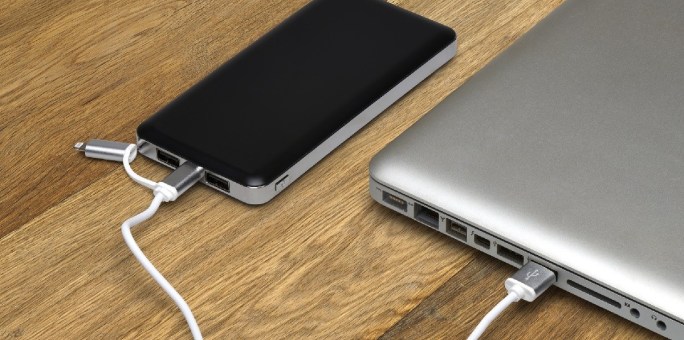
Whether it’s due to an electrical issue or inclement weather, a power outage can leave you feeling helpless. Ready.gov says it’s always a good idea to be prepared for a power outage. While it’s a good idea to stock up on nonperishable food, water, flashlights, and extra batteries to prepare for this type of situation, making sure your technology is ready in advance may be harder.
In an emergency, some people rely on their smartphones and laptops for information. But, since it can be hard to know if and when the power is going to go out, what do you do if your phone or computer charge is low when everything goes dark? Fortunately, there are a few ways you can get more charge out of your electronics, even with no electricity. Consider these suggestions for how to charge your phone or laptop when the power is out.
Capture Solar Energy or Power Up Manually
Being prepared means planning ahead. That includes buying extra batteries or backup chargers that work without electricity and storing them for unexpected emergencies. Some examples of nonelectrical chargers include solar-powered and hand-crank versions, says the Federal Emergency Management Agency.
Solar-powered battery chargers are portable devices that use energy from the sun for charging power. Keep in mind that because many incidents of the power going out are due to bad weather, the sun may not always be an option. For these situations, a hand-crank charger may be a more practical option. Although these chargers require a lot of effort to get power, they are a useful device to have around in emergencies.
Purchase a Portable Battery Charger
A portable battery charger may be good to have on hand since it doesn’t require electricity, but you’ll have to remember to keep it charged up. This type of charger essentially acts as a backup battery for your electronics, says Lifewire.com, and contains USB ports where you can plug in your device’s charger. Since these chargers come in a wide range of power capacities and sizes, you may want to consider your needs before purchasing one. Think about what kind of devices you’d need to charge, how long you’d like the battery pack to last, size and the number of charging ports you need, says Lifewire.com. For example, if you’re planning to charge a bigger device, such as a laptop, you’ll likely need one with a larger battery to fully charge the device in a power outage.
Use Your Computer as a Power Source
When the power goes out, having a smartphone may be a greater priority than a laptop, as it can typically connect to both the Internet and make emergency calls. And, depending on the model of your laptop, you may be able to charge your phone with it. If you always keep your computer charged up and find yourself in a power outage, EarthEasy.com suggests powering up your phone by simply plugging the phone into your computer’s USB port. Be advised, however, that charging your phone through a laptop may take longer and will drain the laptop battery, so this should only be used as a short-term solution, says EarthEasy.com. You may also want to test out this method prior to the power ever going out so you can confirm it will work.
Take Power From Your Car
Since batteries do not use electricity to provide power, remember that they are available to use during an outage. This may include your car battery. Newer vehicles usually have USB charging ports for phones and computers, while older vehicles often have a power socket that special adapter chargers can plug into. When using this method, be sure to run your car in the driveway — well away from the house — and plug your phone or laptop into the car’s charging port.
Safety tip: Remember, it’s never safe to leave a car running while parked inside the garage, even if the garage door is open. Make sure to move the car far away from the house to help prevent a carbon monoxide hazard.
Conserve Power
In addition to finding ways to charge your electronics in a power outage, you should consider conserving what power you have left. The Department of Energy offers the following tips for preserving your phone’s battery life:
- Turn off all applications, including those that run in the background on your phone, such as Wi-Fi and Bluetooth
- Lower your phone’s screen brightness (this could also apply to a laptop)
- Put your phone in airplane mode when not in use
Learning how to charge your phone without electricity may be essential if you live in a location with frequent power outages. But even if you don’t, remember these tips to stay better prepared in case the unexpected happens.
Source: https://al.st/2ISv572

